Discover 35 hidden attractions, cool sights, and unusual things to do in São Paulo (Brazil). Don't miss out on these must-see attractions: Ibirapuera Park, Pinacoteca do Estado de São Paulo, and São Paulo Museum of Art. Also, be sure to include Mercado Municipal in your itinerary.
Below, you can find the list of the most amazing places you should visit in São Paulo (São Paulo).
Table of Contents
Ibirapuera Park

Also known as: Parque Ibirapuera
Park in São Paulo, Brazil. Ibirapuera Park is an urban park in São Paulo. It comprises 158 hectares between Av. República do Líbano, Av. Pedro Alvares Cabral, and Av. IV Centenário, and is the most visited park in South America, with 14.4 million visits in 2017.
Ibirapuera Park was the first metropolitan park in São Paulo, designed along the lines of other great English landscape gardens built in the 20th century in major cities around the globe, but inspired on modern drafts from the landscape architect Roberto Burle Marx. It was inaugurated on 21 August 1954 for the 400th anniversary of the city of São Paulo with buildings designed by architect João Felipe Pereira and landscape by agronomist Otávio Augusto Teixeira Mendes. The construction of several pavilions in the park was controversial when the park was designed, and group of people advocated for an exclusively green park rather than one that included buildings. In the 90s, its green areas were graded heritage-listed status by the city and the state of São Paulo to avoid further construction and keep its historical gardens and green open spaces preserved. In 2016, the complex of buildings designed by Niemeyer in the park were also registered as national landmark by the National Historic and Artistic Heritage Institute.
Ibirapuera is one of Latin America's largest urban parks, together with Chapultepec Park in Mexico City and Simón Bolívar Park in Bogota, and its iconic importance to São Paulo is often internationally comparable to that of Central Park to New York City. The park is often cited as one of the most vibrant and photographed parks in the world, as together with its large area for leisure, jogging and walking, it hosts a vivid cultural scene with museums, a music hall, and popular events such as São Paulo Fashion Week, congresses and trade shows. It is claimed to be the most visited urban park in South America, is listed as one of the best parks in the world, and has been described as "a green oasis at the heart of a concrete jungle".
The park has been managed for decades by the city of São Paulo, but the local government plans to concession all its parks' management to private hands, starting with Ibirapuera Park. Since 2014, the park also has the support of the Ibirapuera Park Conservancy (Parque Ibirapuera Conservação), a strong community nonprofit that supports park stewardship and conservation actions through a capital improvement plan, engagement projects and volunteer work. Admission to the park has been free since 1954, and it is open from 5am until midnight every day.[1]
Address: Av. Pedro Álvares Cabral, 04094-050 São Paulo (Vila Mariana)
Pinacoteca do Estado de São Paulo
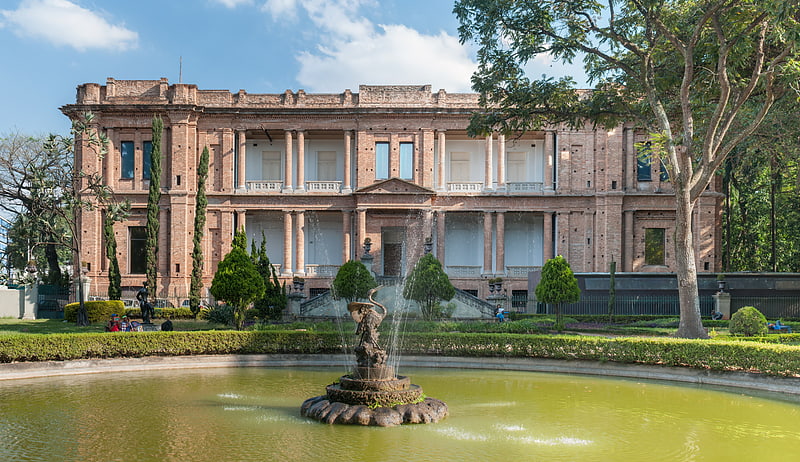
Established museum for Brazilian artwork. The Pinacoteca do Estado de São Paulo is one of the most important art museums in Brazil.[2]
Address: Praça da Luz, 2, 01120-010 São Paulo (Sé)
São Paulo Museum of Art
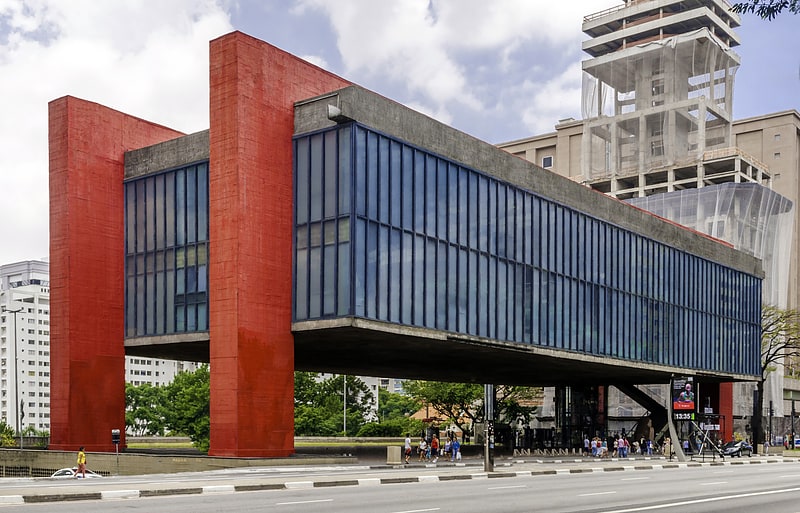
Also known as: Museu de Arte de São Paulo
Large collection by renowned artists. The São Paulo Museum of Art is an art museum located on Paulista Avenue in the city of São Paulo, Brazil. It is well known for its headquarters, a 1968 concrete and glass structure designed by Lina Bo Bardi, whose main body is supported by two lateral beams over a 74 metres freestanding space, considered a landmark of the city and a main symbol of modern Brazilian architecture.
The museum is a non-profit institution founded in 1947 by Assis Chateaubriand and Pietro Maria Bardi. MASP distinguished itself for many important initiatives concerning museology and art education in Brazil, as well as for its pioneering role as a cultural center. It was also the first Brazilian museum interested in post-World War II art.
The museum is internationally recognized for its collection of European art, considered the finest in Latin America and all Southern Hemisphere. It also houses an emphatic assemblage of Brazilian art, prints and drawings, as well as smaller collections of African and Asian art, antiquities, decorative arts, and others, amounting to more than 8,000 pieces. MASP also has one of the largest art libraries in the country. The entire collection has been named by Brazil's Institute of History and Art to the Brazilian National Heritage list.[3]
Address: Av. Paulista, 1578, 01310-200 São Paulo (Sé)
Mercado Municipal
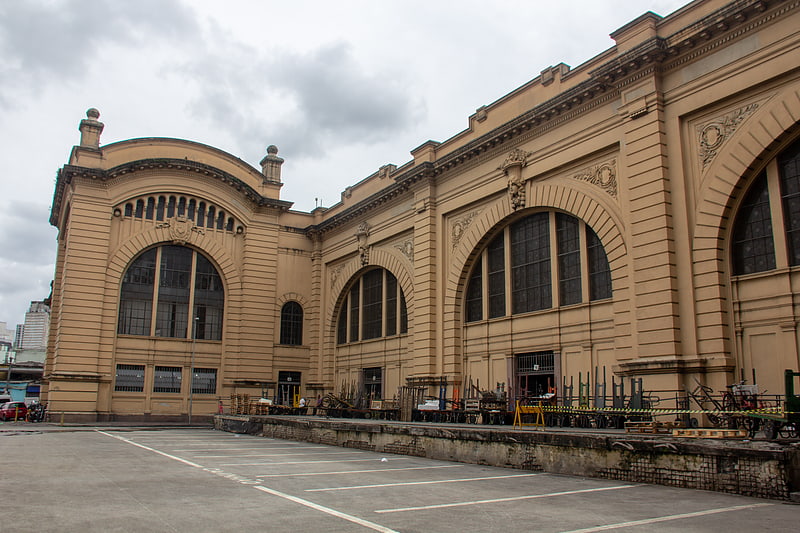
Market in São Paulo, Brazil. The Municipal Market of São Paulo is a large public market in São Paulo, Brazil. It was designed by the architect Francisco Ramos de Azevedo and inaugurated on January 25, 1933 as a wholesale and retail post specializing in fruits, vegetables, cereals, meats, spices and other food products. The market is located in the Mercado neighborhood, a name that references the market, in the historic center of São Paulo. It is located near the Tamanduateí River in the old Várzea do Carmo, a floodplain of the river now primarily used as Dom Pedro II Park. The market was formally named the Mercado Municipal São Paulo in 1995. It is commonly known in São Paulo as the Mercadão, or "big market", and a noted meeting point for resident São Paulo and one of the most visited tourist spots in the city.[4]
Address: São Paulo, Rua da Cantareira, 306
Museu da Língua Portuguesa

Museum. The Museum of the Portuguese Language is an interactive Portuguese language—and Linguistics/Language Development in general—museum in São Paulo, Brazil. It is housed in the Estação da Luz railway station, in the urban district of the same name. Three hundred thousand passengers arrive and leave the station every day, and the choice of the building for the launching of the museum is connected to the fact that it was mainly here that thousands of non-Portuguese speaking immigrants arriving from Europe and Asia into São Paulo via the Port of Santos got acquainted with the language for the first time. The idea of a museum-monument to the language was conceived by the São Paulo Secretary of Culture in conjunction with the Roberto Marinho Foundation, at a cost of around 37 million reais.
The objective of the museum is to create a living representation of the Portuguese language, where visitors may be surprised and educated by unusual and unfamiliar aspects of their own native language. Secondly, the caretakers of the museum, as expressed on the official website, "desire that, in this museum, the public has access to new knowledge and reflection in an intense and pleasurable manner," as it notices the relationship of the language with others, as well as its proto-languages. The museum targets the Portuguese speaking population, made up of peoples from many regions and social backgrounds, but who still have not had the opportunity to gain a broader understanding of the origins, the history and the continuous evolution of the language.[5]
Address: Praça da Luz, 01120-010 São Paulo (Sé)
Museu Paulista

Also known as: Museu do Ipiranga
Museum in São Paulo, Brazil. The Museu Paulista of the University of São Paulo is a Brazilian history museum located near where Emperor Pedro I proclaimed the Brazilian independence on the banks of Ipiranga brook in the Southeast region of the city of São Paulo, then the "Caminho do Mar," or road to the seashore. It contains a huge collection of furniture, documents and historically relevant artwork, especially relating to the Brazilian Empire era.
The most famous work of art in the collection is the 1888 painting Independência ou Morte (Independence or Death) by Pedro Américo.
A few months after the Brazilian Declaration of Independence, people started to suggest a monument on the site where the declaration took place, although they were not sure about what sort of memorial construction to build. In 1884, Italian architect Tommaso Gaudenzio Bezzi, who was hired to develop the project, chose to build an eclectic-styled construction similar to the French Palace of Versailles with impressive and perfectly manicured gardens and fountain.
The museum closed in August 2013 for extensive restoration and modernisation; it is due to re-open in 2022.[6]
Address: Av. Nazaré, s/n, 04210-000 São Paulo (Ipiranga)
São Paulo Zoo
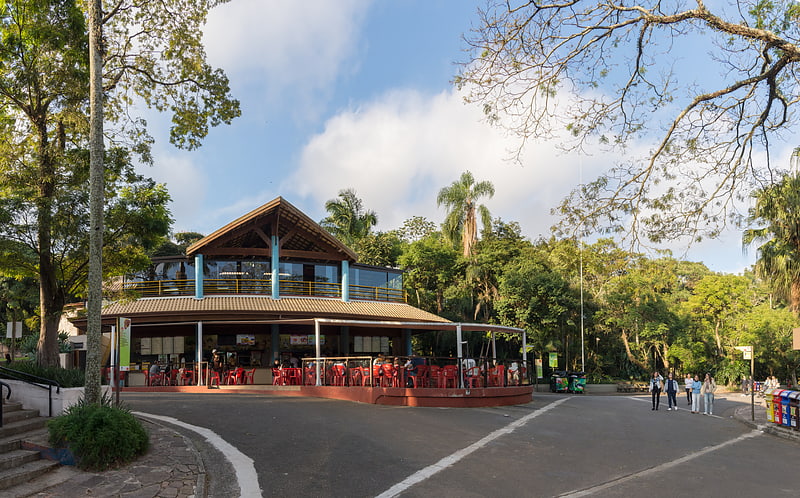
Also known as: Parque Zoológico de São Paulo
Sizable, popular zoo with tours and shows. The São Paulo Zoo is the largest zoo in Brazil. With 824,529 m2 of space in what was originally the Atlantic Forest, the zoo is south of the city of São Paulo.
It displays more than 3,200 animals, 102 species of mammals, 216 species of birds, 95 species of reptiles, 15 species of amphibians and 16 species of invertebrates in enclosures that replicate the natural habitats of these animals. The zoo's farm of 572 ha produces vegetables used in the manufacturing of feed for various animals, and material for the enclosures where the animals are. It also has animals that need extra space for mating.
The zoo has a nursery for cubs who are rejected by their mothers, electric incubators and an incubation room for eggs of birds and reptiles. The educational function is emphasized in the zoo. Its library of more than four thousand volumes is open to the public. Its partnerships with other state, federal and foreign institutions includes research that facilitates the preservation of endangered species.[7]
Address: Av. Miguel Estéfno, 4241, 04301-002 São Paulo (Ipiranga)
Centro Cultural Banco do Brasil

Museum in São Paulo, Brazil. The Centro Cultural Banco do Brasil is a cultural organization of the Banco do Brasil based in Brazil with centers in Rio de Janeiro, Brasília, São Paulo and Belo Horizonte.
The CCBB began in 1986. It opened in Rio de Janeiro in 1989, Brasília in 2000, São Paulo in 2001 and Belo Horizonte in 2013. Its three centers in Rio de Janeiro, Brasilia, and São Paulo are among the top hundred most visited art museums in the world. In 2013, the three centers combined had 4.4 million visitors: 2,034,397 visitors in Rio de Janeiro, 1,468,818 visitors in Brasília, and 931,639 visitors in São Paulo.
The largest of the CCBB institutions is located in Rio de Janeiro, in an Art Deco building designed by Francisco Joaquim Bethencourt da Silva.Similar in size is the São Paulo institution, designed in the same style by Hippolyto Pujol. The smallest of the three complexes is the Brasília branch, designed by Alba Rabelo Cunha.
Both the Rio de Janeiro and São Paulo branches contain theatres, cinemas, and multiple art galleries.[8]
Address: Banco do Brasil - R. Quinze de Novembro, 111, 01013-001 São Paulo (Sé)
São Paulo Cathedral
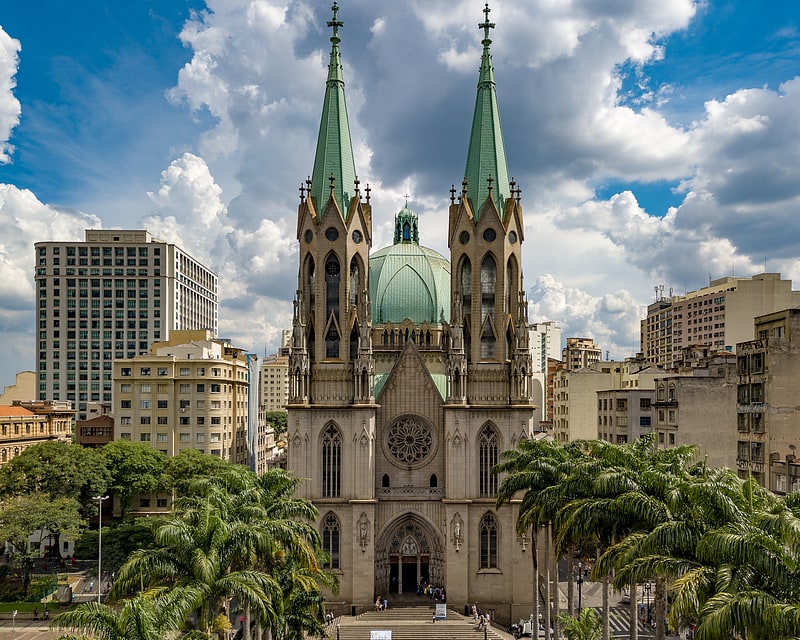
Also known as: Catedral Metropolitana de São Paulo
Monumental neo-gothic cathedral. The São Paulo Metropolitan Cathedral, also known as the See Cathedral, is the cathedral of the Roman Catholic Archdiocese of São Paulo, Brazil. Its current and seventh Metropolitan Archbishop is Dom Odilo Pedro Cardinal Scherer, appointed by Pope Benedict XVI on March 21, 2007, and installed on April 29 of the same year. The existing cathedral's construction, in a Gothic revival style, began in 1913 and ended four decades later. It was ready for its dedication on the 400th anniversary of the foundation of the then humble villa of São Paulo by Chief or Cacique Tibiriçá and the Jesuit priests Manuel da Nóbrega and José de Anchieta. Despite its Renaissance-style dome, the São Paulo Metropolitan Cathedral is considered by some to be the fourth largest neo-Gothic cathedral in the world.[9]
Address: Praça da Sé, 01001-000 São Paulo (Sé)
Allianz Parque
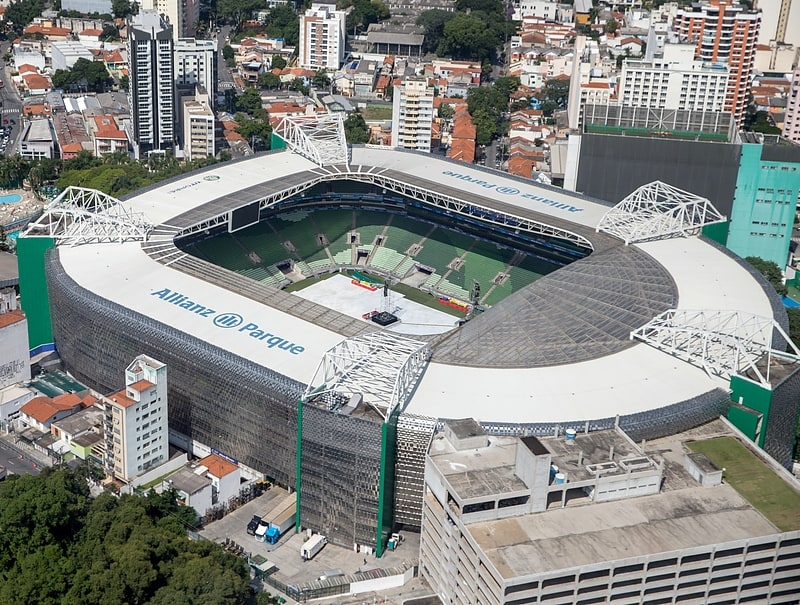
Stadium in São Paulo, Brazil. Allianz Parque, also known as Palestra Itália Arena, is a multipurpose stadium in São Paulo, Brazil, built to receive shows, concerts, corporate events, and especially football matches of Palmeiras, the site owner. The stadium has a capacity of 43,713 spectators.
The stadium has one of the most modern multipurpose spaces in the country, and its stadium meets all of FIFA's standards, accrediting it to receive the most relevant sports tournaments. With construction starting in 2010, and planning by Portuguese architect Tomás Taveira.
The new stadium was built by the company WTorre Properties/Arenas, belonging to WTorre Group, located on the same place of the old Palestra Itália Stadium, also popularly known as Parque Antárctica.[10]
Address: Av. Francisco Matarazzo, 1705, 05001-200 São Paulo (Lapa)
Rua 25 de Março
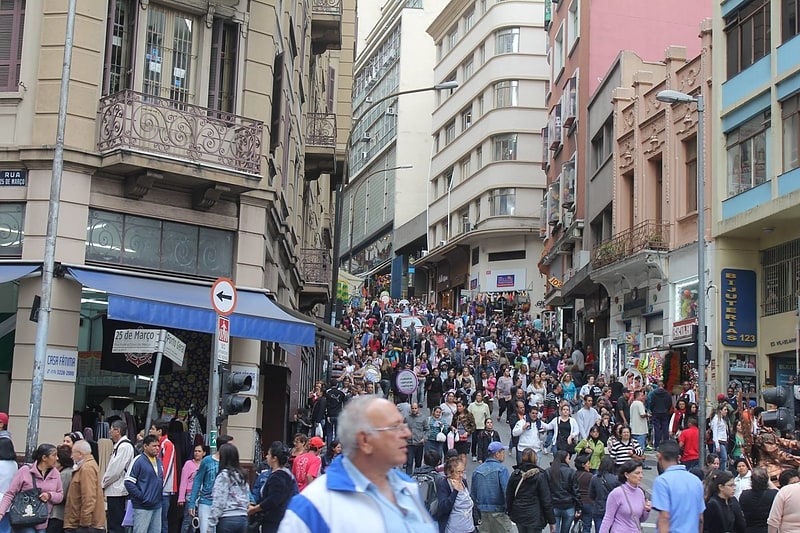
Street in São Paulo, Brazil. Rua 25 de Março or Rua Vinte e Cinco de Março is a popular shopping street in the central zone of São Paulo, Brazil. The district surrounding Rua 25 de Março has long been synonymous in Brazil with large crowds and discount shopping.[11]
Address: Rua 25 de Março, São Paulo (Sé)
Theatro Municipal
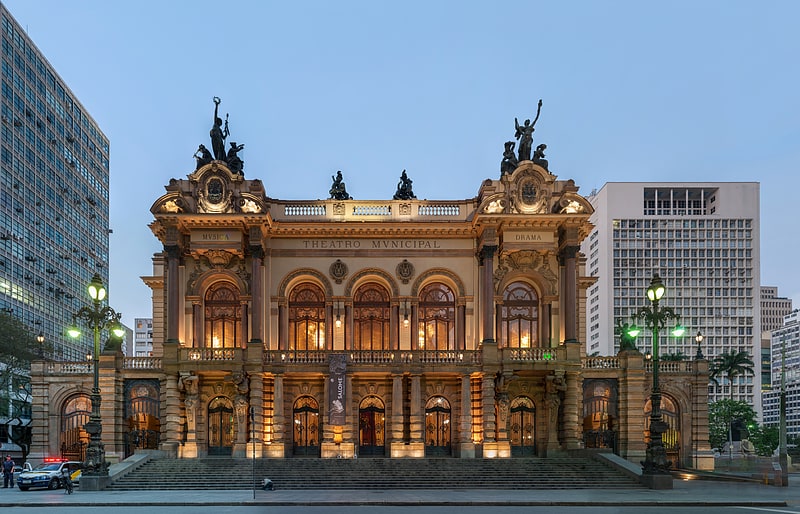
Theatre in São Paulo, Brazil. Municipal Theatre of São Paulo is a theatre in São Paulo, Brazil. It is regarded as one of the landmarks of the city, significant both for its architectural value as well as for its historical importance, having been the venue for the Week of Modern Art in 1922, which revolutionised the arts in Brazil. The building now houses the São Paulo Municipal Symphonic Orchestra, the Coral Lírico and the City Ballet of São Paulo.[12]
Address: Praça Ramos De Azevedo, S/N, 01037-010 São Paulo (Sé)
Museu Anchieta
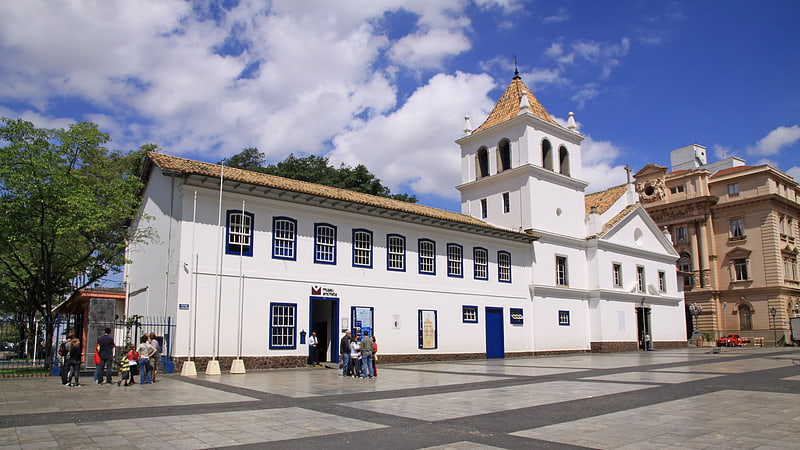
Basílica José de Anchieta is a church located in São Paulo, Brazil. It was built in 1554–56.[13]
Address: Largo Páteo do Colégio, 2, 01016-040 São Paulo (Sé)
Professor Aristóteles Orsini Planetarium
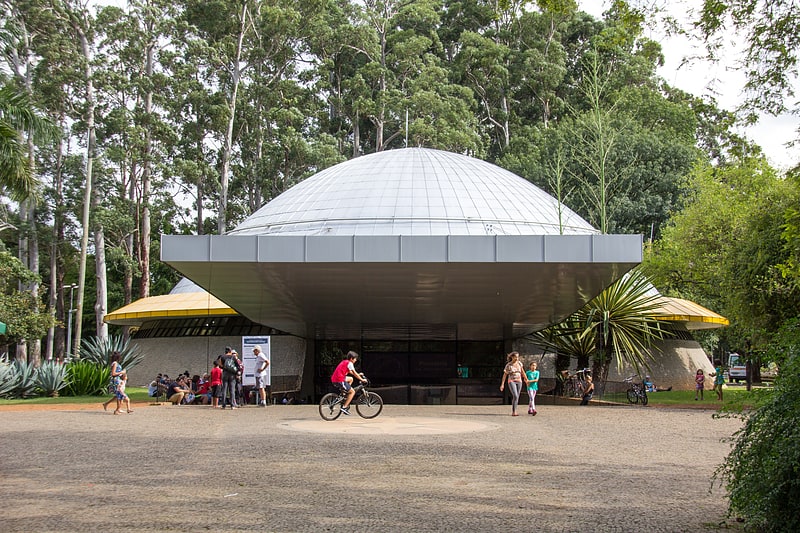
Also known as: Planetário Professor Aristóteles Orsini
Planetarium in São Paulo, Brazil. The Professor Aristóteles Orsini Planetarium, also known as the Ibirapuera Planetarium, is a planetarium in Ibirapuera Park, São Paulo. It opened in January 1957, and was the first planetarium in Brazil and Latin America. It is one of three planetaria in São Paulo, with the others being Carmo Planetarium and the Johannes Kepler Planetarium at Sabina Escola Parque do Conhecimento.[14]
Address: Avenida Pedro Alvares Cabral 1301 S/N, Portao 10, 04094-901 Sao Paulo (Vila Mariana)
Jardim da Luz
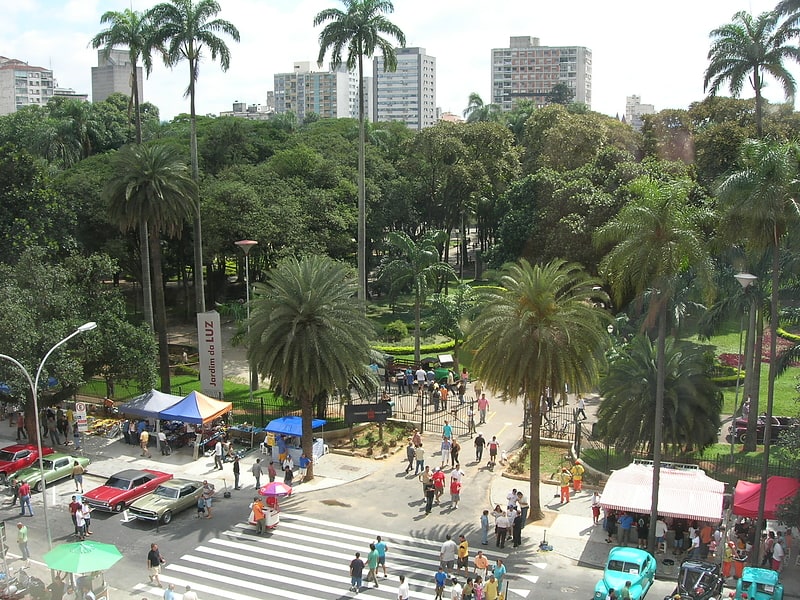
Urban green space with sculptures. Jardim da Luz is a public park near the Luz station and Avenida Tiradentes in the Bom Retiro district of São Paulo. The headquarters of the Pinacoteca do Estado de São Paulo is located in the southeastern corner of the park.[15]
Address: Praca da Luz s/n, 01120-010 Sao Paulo (Sé)
Vale do Anhangabaú
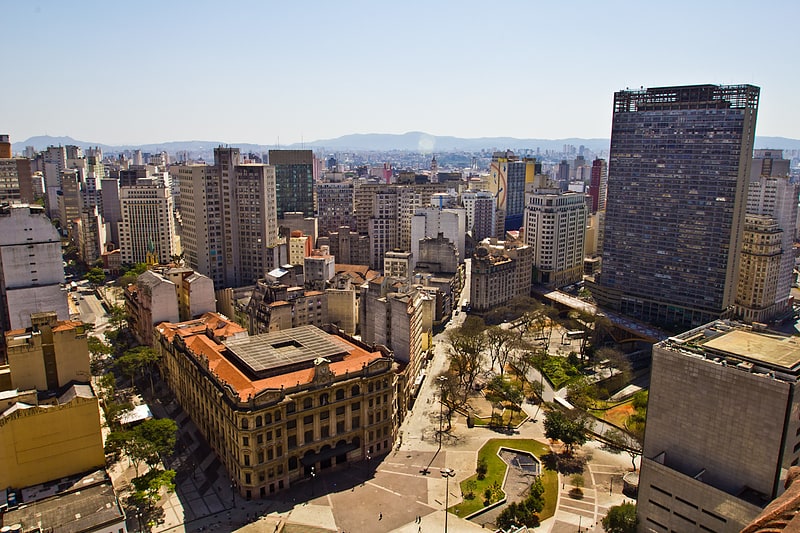
Vale do Anhangabaú is a region in the city center of São Paulo, located between the viaducts do Chá and Santa Ifigênia. It is a public space commonly characterized as park, where events have traditionally been organized, such as public demonstrations, political rallies, presentations and popular shows. It is considered the point that separates the Old City Center from the New City Center.
Currently, the 43 thousand square meters of the Anhangabaú Valley are used as a crossing point for people wishing to transit between the east and west regions of the Center, and can be defined as an extensive boardwalk under a road junction. The space also interconnects with other squares in the central area, such as Praça Ramos de Azevedo, juxtaposed with the Valley, Largo de São Bento, through the steps of the Metro and Praça da Bandeira, which currently houses a bus station.
With gardens, works of art and three fountains, Vale do Anhangabaú is today a postcard of the City Center of São Paulo, from where it is possible to glimpse buildings such as the Martinelli, Altino Arantes, Teatro Municipal, and the Matarazzo Building, headquarters of city hall. The space also acts as a stage for Virada Cultural, a traditional event in São Paulo that promotes shows and cultural activities throughout the city. Due to its wide dimension, the Valley is considered an adequate space for large public meetings and was even the stage for the largest Brazilian public rally, in the Diretas Já demonstrations, organized on April 16, 1984, when it was received about 1.5 million people. In addition to being in a region that houses all the places mentioned above, the Vale do Anhangabaú is also located near the Dramatic and Musical Conservatory of São Paulo, which is called the School of Dance of São Paulo, also known as the School of Dance of the Municipal Theater of São Paulo (EDTMSP). Basically, it is a university campus that concentrates classes on public dance in the city.[16]
Address: Rua Libero Badaro - Parque Anhangabau, São Paulo (Sé)
Joelma Building
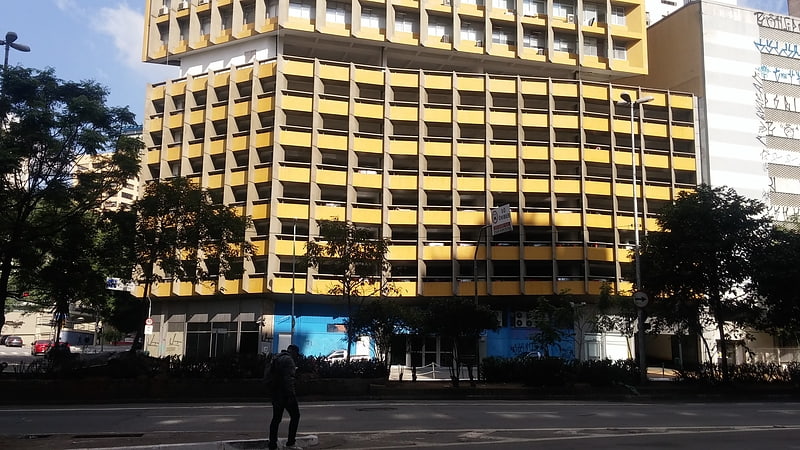
Also known as: Edifício Praça da Bandeira
Skyscraper in São Paulo, Brazil. Edifício Praça da Bandeira, better known by its former name, Joelma Building, is a 25-story building in downtown São Paulo, Brazil, completed in 1971, located at Avenida 9 de Julho, 225. On 1 February 1974, an air conditioning unit on the twelfth floor overheated, starting a fire. There were 756 people in the building at the time. Because flammable materials had been used to furnish the interior, the entire building was engulfed in flames within 20 minutes. The fire was extinguished at 1:30pm, with 179 deaths and 300 people injured.
This happened less than two years after another deadly fire in downtown São Paulo, that of the Andraus Building. As of 2021, the Joelma fire remains the second-worst skyscraper fire ever in terms of the death toll, after the collapse of the twin World Trade Center towers in New York City on September 11, 2001.[17]
Museu Afro Brasil
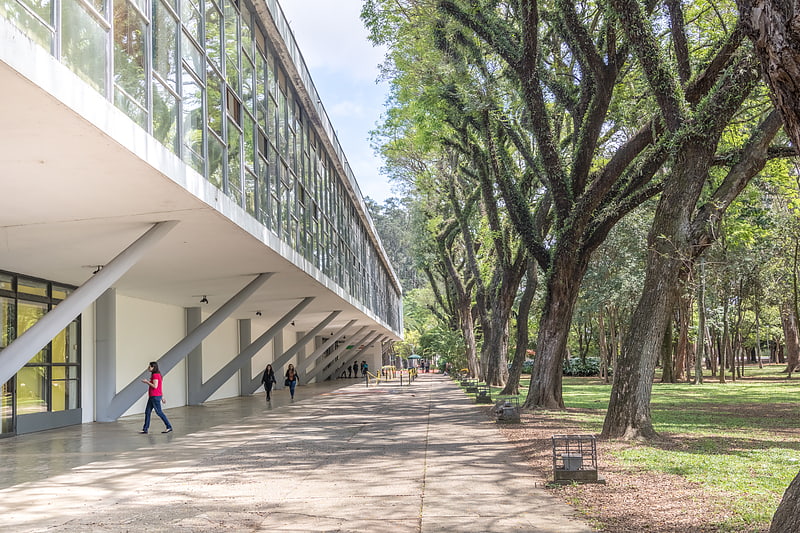
Museum in São Paulo, Brazil. Museu Afro Brasil is a history, artistic and ethnographic museum dedicated to the research, preservation, and exhibition of objects and works related to the cultural sphere of black people in Brazil. It is a public institution held by the Secretariat for Culture of the São Paulo State and managed by the Museu Afro Brasil Association. The museum is located in Ibirapuera Park, a major urban park in São Paulo. The Manoel da Nóbrega Pavilion, designed by Oscar Niemeyer in 1959, houses the Museum. It holds around 6 thousands items and pieces including paintings, sculptures, photos, documents, and archives created between the 15th Century and the present day. The aggregation of pieces includes many works of the African and Afro-Brazilian cultural spheres, ranging from subjects and topics such as religion, labor, and art to the African Diaspora and slavery, whilst registering and affirming the historical trajectory and the African influences in the construction of the Brazilian society. The Museum also offers a diverse range of cultural and didactic activities, temporary expositions, and contains a theater and a specialized library.[18]
Address: Avenida Pedro Alvares Cabral, 04094-050 Sao Paulo (Vila Mariana)
Octávio Frias de Oliveira Bridge
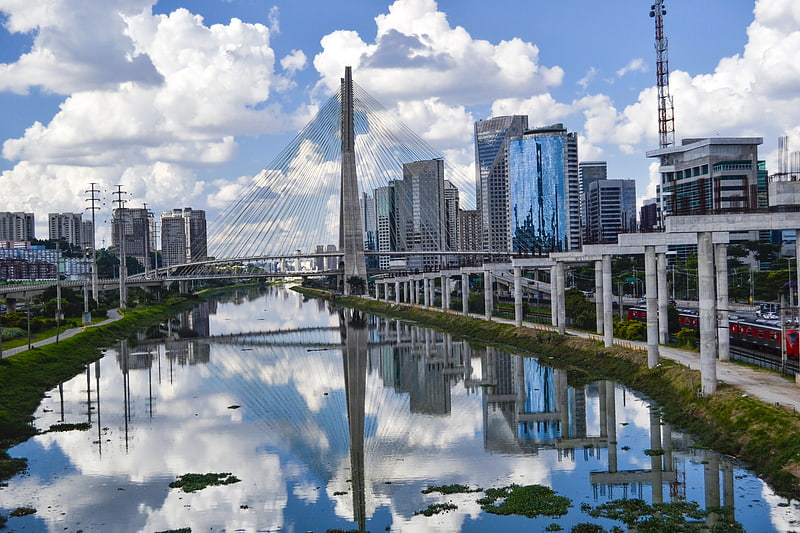
Also known as: Ponte Octávio Frias de Oliveira
Cable-stayed bridge in São Paulo, Brazil. The Octavio Frias de Oliveira bridge, commonly known as "Ponte Estaiada", is a cable-stayed bridge in São Paulo, Brazil over the Pinheiros River, opened in May 2008. The bridge is 138 metres tall, and connects Marginal Pinheiros to Jornalista Roberto Marinho Avenue in the south area of the city. It is named after Octavio Frias de Oliveira.[19]
Viaduto do Chá
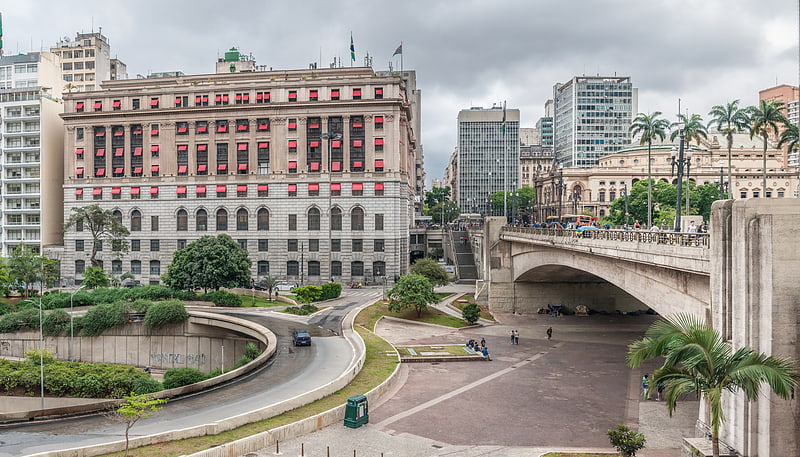
Viaduct. Viaduto do Chá is a viaduct of São Paulo, Brazil. It was the first viaduct built in the city, and was instigated by Jules Martin, a French immigrant to the city. The 240-metre span crosses the Vale do Anhangabaú. Originally conceived in 1877, construction started in 1888 before being stopped one month later by a court case brought by local residents. Construction resumed in 1889, and the iron bridge was completed in 1892. The original viaduct was replaced in 1938 with a new concrete span. It often appears in TV interviews, as well as films and telenovelas set in São Paulo.[20]
Address: Viaduto do Cha S/N, 01002-020 Sao Paulo (Sé)
Mosteiro de São Bento
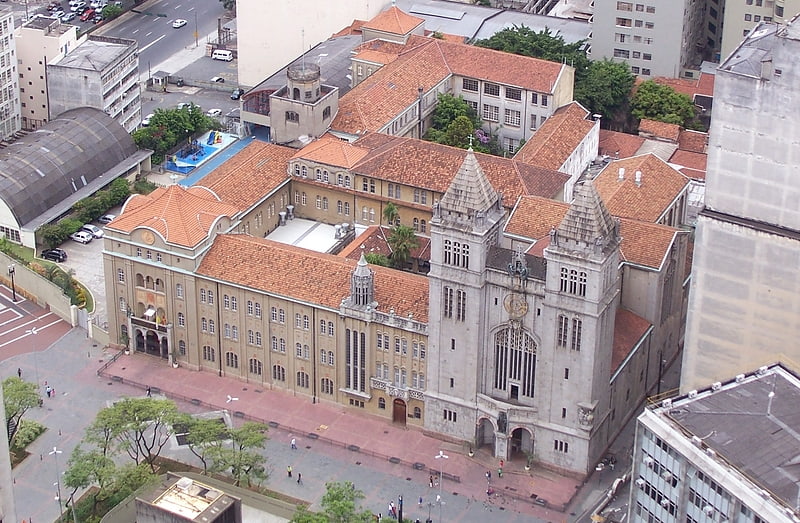
Grand church with a popular bakery. Mosteiro de São Bento is a church located in São Paulo, Brazil. Established on 14 July 1598, the current church was built between 1910 and 1914.[21]
Address: Largo de São Bento, s/nº, 01029-010 São Paulo (Sé)
Instituto Butantan
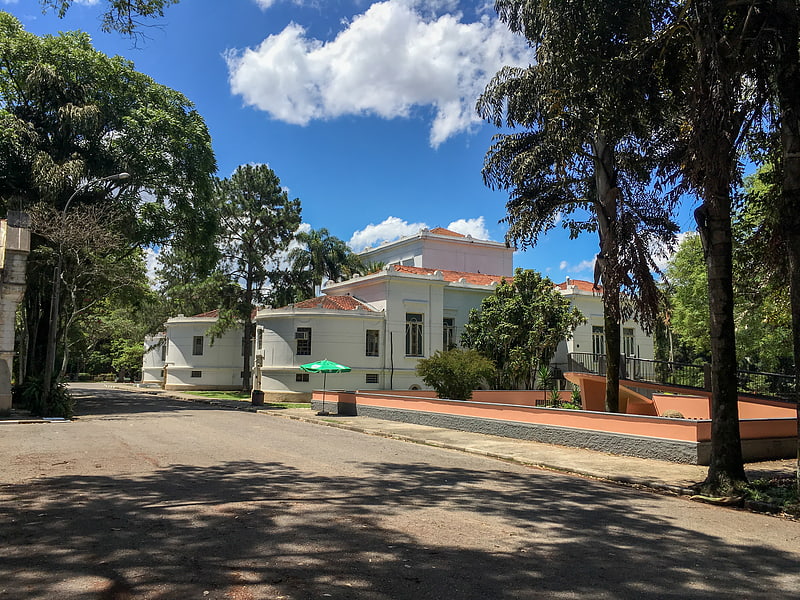
Research institute in São Paulo, Brazil. Instituto Butantan is a Brazilian biologic research center located in Butantã, in the western part of the city of São Paulo, Brazil. Instituto Butantan is a public institution affiliated with the São Paulo State Secretariat of Health and considered one of the major scientific centers in the world. Butantan is the largest immunobiologicals and biopharmaceuticals producer in Latin America. It is world-renowned for its collection of venomous snakes, as well as those of venomous lizards, spiders, insects and scorpions. By extracting the reptiles' and insects' venoms, the Institute develops antivenoms and medicines against many diseases, which include tuberculosis, rabies, tetanus and diphtheria.[22]
Address: Avenida Doutor Vital Brasil 1500, 05503-900 Sao Paulo (Butantã)
Ibirapuera Auditorium

Also known as: Auditório Ibirapuera
Striking red and white performance venue. The Ibirapuera Auditorium is a building conceived by Oscar Niemeyer for the presentation of musical spectacles, situated in Ibirapuera Park in São Paulo.[23]
Address: Avenida Pedro Alvares Cabral 3, 04094-050 Sao Paulo (Vila Mariana)
Marco Zero
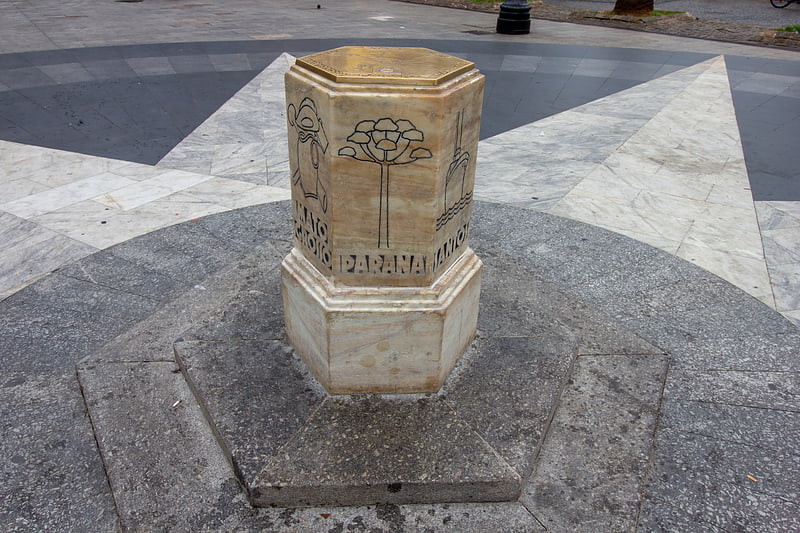
Also known as: Marco zero da cidade de São Paulo
Historical landmark in São Paulo, Brazil. Marco Zero is a geographic monument in downtown São Paulo. In 1934, the marble milestone was installed in front of the São Paulo Cathedral on the Praça da Sé to symbolize the center of the city. The sculpture is a both a tourist attraction and a central point of reference for street numbers in the city. Marco Zero has been registered for historic preservation since 2007.[24]
Address: Praça da Sé, 88, 01001-001 São Paulo (Sé)
Edifício Itália
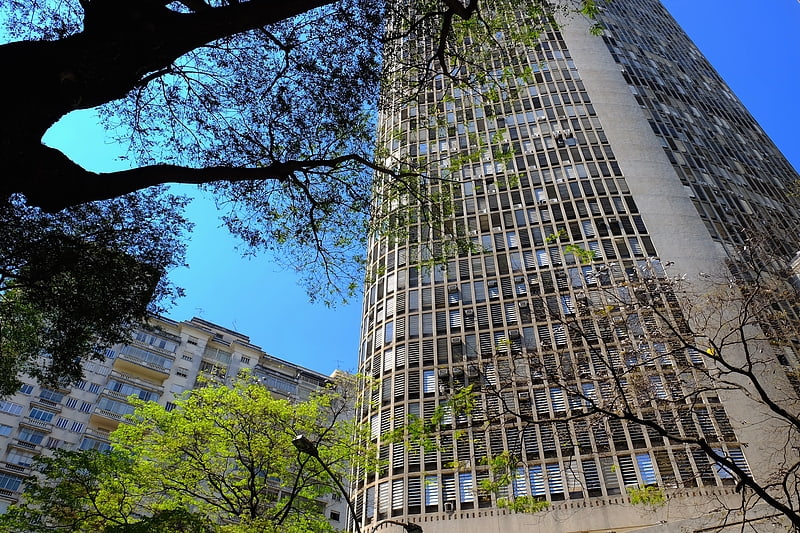
Skyscraper in São Paulo, Brazil. Edifício Itália is a 165 m tall 46-story skyscraper located in the República district, Central Zone of São Paulo, Brazil. Built from 1956 to 1965, it has a rooftop observation deck, open for tourists.
Edifício Itália was designed by Brazilian architect Franz Heep. It is the 3rd tallest building in Brazil (and the 2nd in São Paulo) after Millennium Palace and Mirante do Vale.[25]
Address: Avenida Ipiranga/Avenida São Luís, República, São Paulo (Sé)
Igreja Martin Luther

The Evangelical Lutheran Church of São Paulo, also known as Martin Luther Church, is one of the headquarters of the Southeast Synod of the Evangelical Church of Lutheran Confession in Brazil, located near the Largo do Paiçandu, in the historic center of São Paulo. The temple was founded on December 25, 1908, being one of the main meeting places of the German community in the first half of the twentieth century.
Initially, it was called by the German name Stadtkirche, being later known as Mother Church and then, only in 1991, being baptized as Martin Luther Church. It is considered the first evangelical Lutheran parish in the city of São Paulo, as well as the first temple in the neo-Gothic style to be built in the city.[26]
Address: 34 Avenida Rio Branco, São Paulo (Sé)
Pátio do Colégio
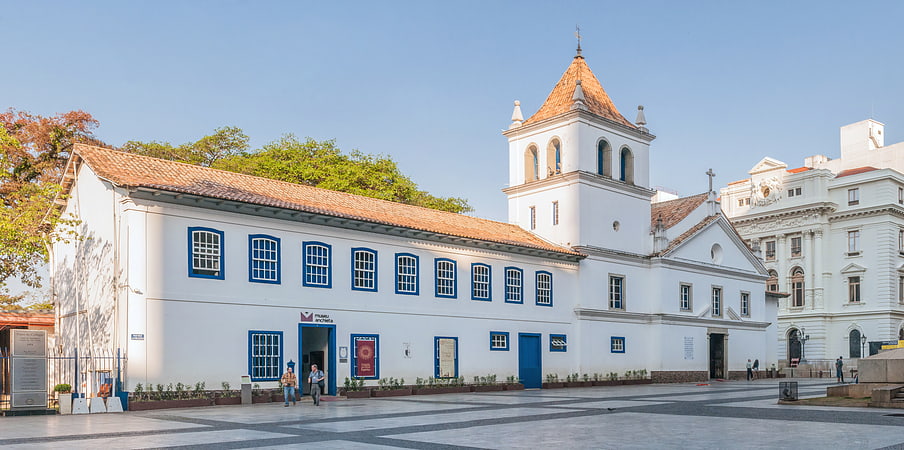
Museum and church where city was founded. Pátio do Colégio is the name given to the historical Jesuit church and school in the city of São Paulo, Brazil. The name is also used to refer to the square in front of the church. The Pátio do Colégio marks the site where the city was founded in 1554.
The city of São Paulo has its beginnings in a mission established by Jesuits Manuel da Nóbrega, José de Anchieta and others in the Brazilian hinterland. The village - then called São Paulo dos Campos de Piratininga - was founded on a plateau between two rivers, the Tamanduateí and the Anhangabaú, and was linked to the coastal village of São Vicente by a precarious path in the rainforest.
The date that marks the beginning of São Paulo is January 25, 1554, when the priests celebrated the inaugural mass of the Jesuit school. Initially, the church building was a modest hut covered with palm leaves or straw. In 1556, under father Afonso Brás, new buildings of the school and church were finished using taipa de pilão (rammed earth), a more solid technique. These buildings would be the centre of spiritual and educational life in the settlement in the next couple of centuries.
Since its beginnings, the Jesuit action in evangelising the Amerinds clashed with the interests of many settlers, who used indigenous slave labour and profited from the indigenous slave trade. In the early São Paulo, the expeditions of the bandeirantes to the hinterland in order to capture Amerinds were an important economic activity, and the conflicts with the Jesuits led to the expulsion of the Order from the village in 1640. Only in 1653, bandeirante Fernão Dias Pais Leme allowed the return of the Jesuit priests. The church and school were extensively rebuilt around 1653.
In 1759, with the Suppression of the Society of Jesus in Portugal and its colonies ordered by the Marquis of Pombal, the fathers had to leave again. The Jesuit buildings now housed the colonial governors of São Paulo, and they continued to serve administrative functions after the Independence of Brazil and well into the 20th century. The colonial structures were completely rebuilt in different styles, and in 1896 the church collapsed. The tower survived but was greatly modified.
In 1953, during the celebrations of the city's 400th anniversary, the area was given back to the Jesuit order. Thanks to their relative simple architecture and the abundance of 19th-century iconography, the church was rebuilt and the tower and the school façade were given back their colonial look. The church and tower, in particular, have the sober Mannerist style they had in the 17th century, typical of Jesuit churches of colonial Brazil.[27]
Address: Largo Patio do Colegio 2, 01016-040 Sao Paulo (Sé)
Monument to the Independence of Brazil
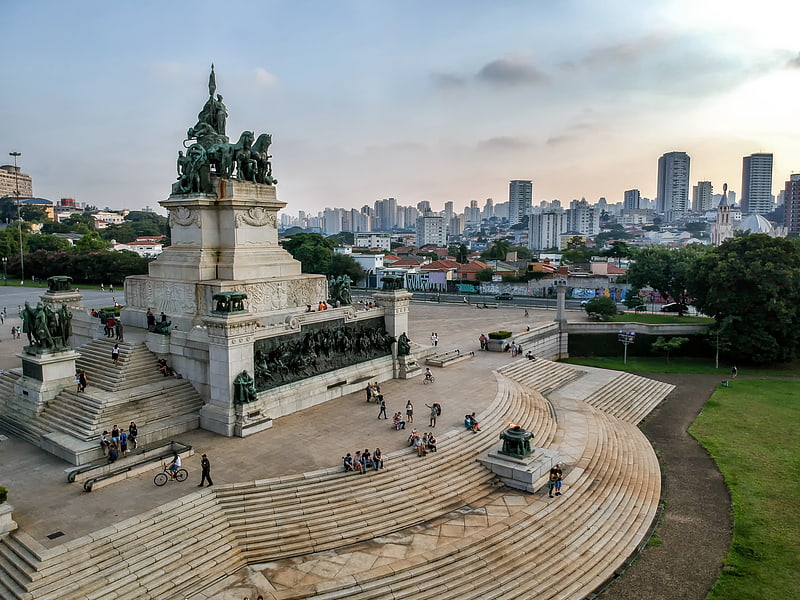
Also known as: Monumento à Independência do Brasil
Bronze memorial for independence. The Monument to the Independence of Brazil is granite and bronze sculpture in São Paulo, Brazil. It is also known as the Ipiranga Monument or the Altar of the Fatherland. The monument is located on the banks of the Ipiranga Brook in São Paulo, on the historic site where the later Emperor Pedro I of Brazil proclaimed the independence of the country on September 7, 1822.
The monument was designed and built by Italian sculptor Ettore Ximenes (1855–1926) and Italian architect Manfredo Manfredi (1859–1927) to celebrate the first centenary of the Brazilian Independence.[28]
Address: Praça do Monumento, s/nº, 04261-050 São Paulo (Ipiranga)
Pico do Jaraguá
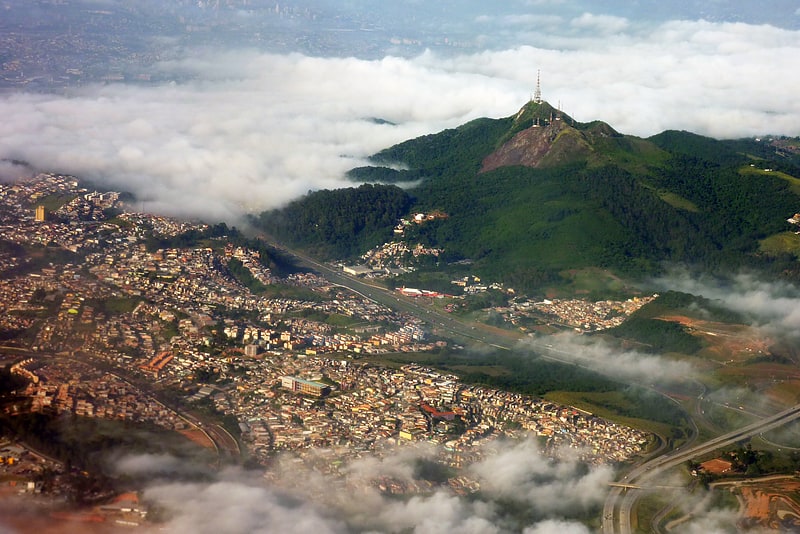
Mountain with stairs and lookout areas. Pico do Jaraguá is the highest mountain in the Brazilian city of São Paulo, at 1135 metres above sea level, located at the Serra da Cantareira. Jaraguá means Lord of the Valley in Tupi.[29]
Address: Estrada Turística do Jaraguá, São Paulo (Pirituba)
Cemitério da Consolação
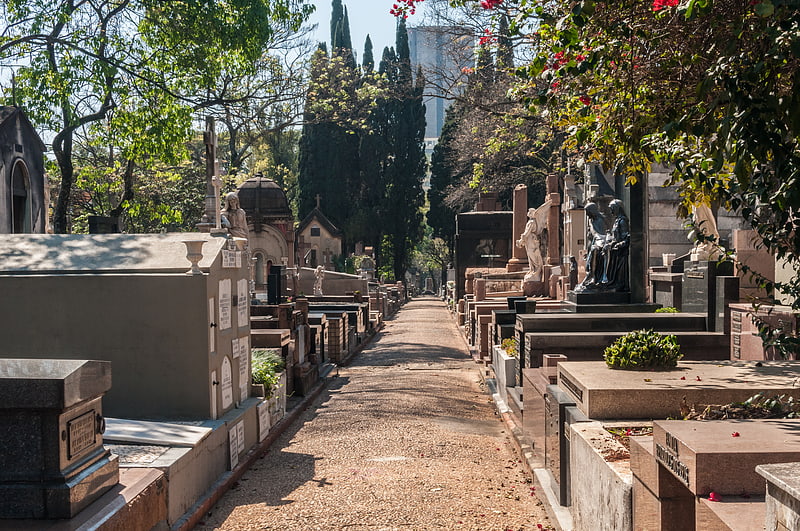
Cemetery in São Paulo, Brazil. Cemitério da Consolação is a cemetery in São Paulo, Brazil. Located along the north side of Rua da Consolação in the district of Consolação, it was founded on 15 August 1858, with the name of Cemitério Municipal, being the city's first public graveyard.
The cemetery is known by its pieces of funerary art, with graves, statues and mausoleums built and sculpted by artists such as Victor Brecheret, Ramos de Azevedo, Luigi Brizzolara and Galileo Emendabili.[30]
Address: Rua da Consolacao 1660, 01302-001 Sao Paulo (Sé)
Via Funchal
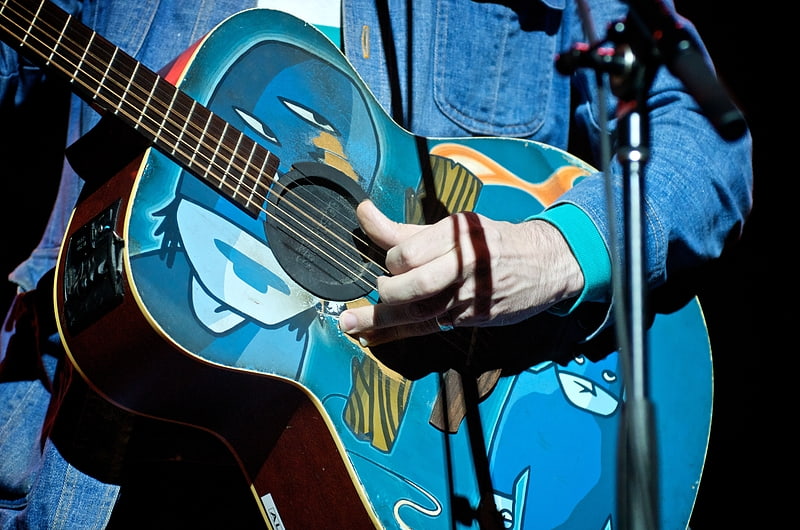
Concert performance venue in São Paulo, Brazil. Via Funchal, with an area of 15,000 m2, was an arena in São Paulo, Brazil, that hosted many events, such as concerts and other shows before closing in December 2012.Seated, it hosted 3,120 people and standing, it hosted as many as 6,000 people.[31]
Museum of Sacred Art
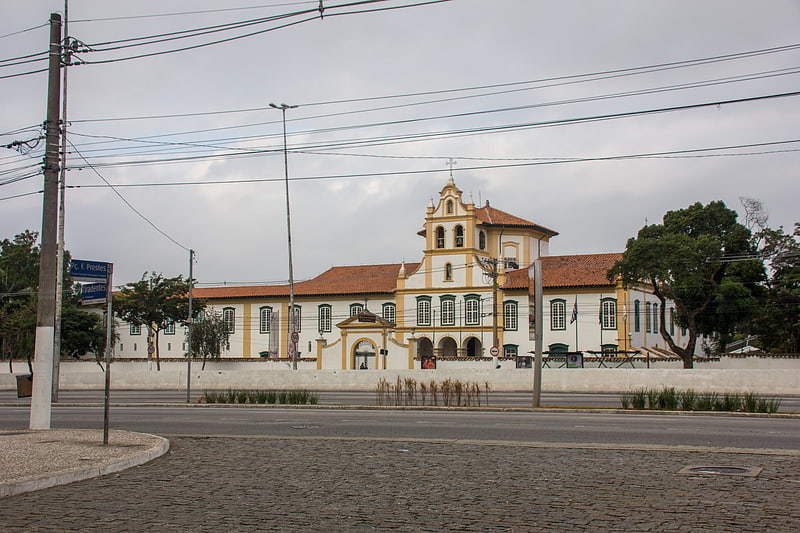
Also known as: Museu de Arte Sacra
Museum in São Paulo, Brazil. The Museum of Sacred Art of São Paulo a museum dedicated to the collection and display of sacred art of Brazil. It is located in the Luz neighborhood of São Paulo in the left wing of the Luz Monastery, a religious institution founded in 1774 by Frei Galvão. The monastery is the only colonial building of the eighteenth century in São Paulo to preserve its original building elements, materials and structure. The monastery was listed as an architectural monument of national importance in 1943 by the National Institute of Historic and Artistic Heritage and subsequently by the State of São Paulo Council for the Defense of the Historical, Archaeological, Artistic and Touristic Heritage.
The museum was founded in 1970 and is maintained jointly by the State Government of São Paulo and the Archdiocese of São Paulo. The collection includes Brazilian and foreign works sacred works dating from the sixteenth century, and includes works by noted artists such as Aleijadinho, Agostinho da Piedade, Agostinho de Jesus, Valentim da Fonseca e Silva, Manoel da Costa Ataíde, José Ferraz de Almeida Júnior, and Benedito Calixto.[32]
Address: Av. Tiradentes, 676, 01101-010 São Paulo (Sé)
Edifício Copan
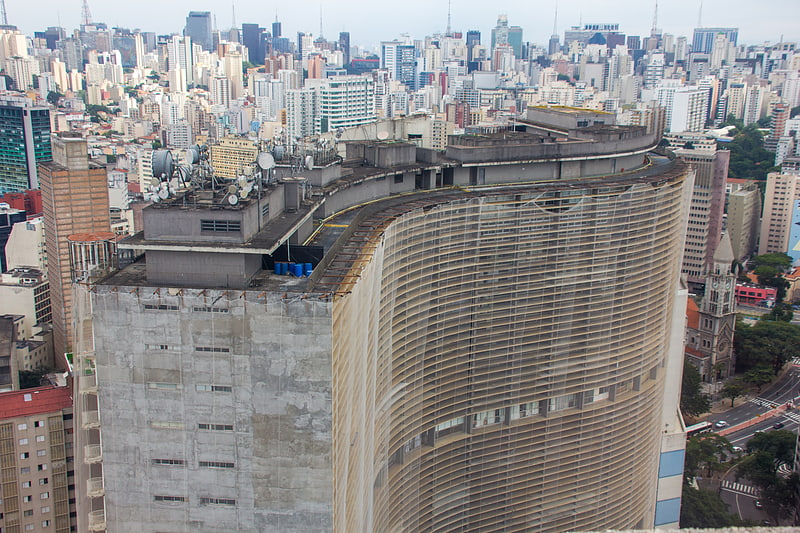
Wave-like apartment building by Niemeyer. The Edifício Copan is a 118.44-metre tall, 38-story residential building in downtown São Paulo, Brazil. It has 1,160 apartments, 70 commercial establishments and is one of the largest buildings in Brazil.[33]
Address: Av. Ipiranga, 200 - 12, 01046-040 São Paulo (Sé)
Museu de Arte Moderna
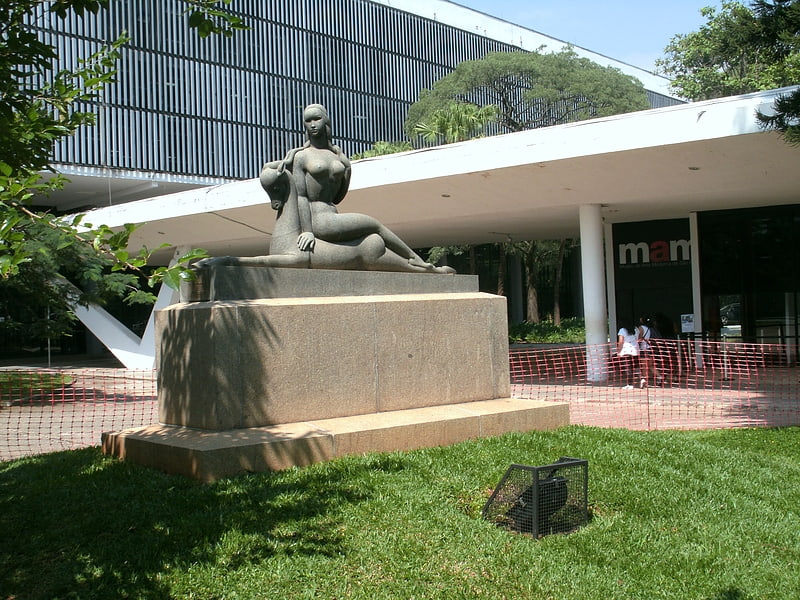
Museum in São Paulo, Brazil. The São Paulo Museum of Modern Art, is located in Ibirapuera Park, São Paulo.
Founded by Francisco Matarazzo Sobrinho and Yolanda Penteado, and built in 1948, the museum is modelled on the Museum of Modern Art in New York City. The Museum has a collection and includes more than 4,000 works by artists such as Anita Malfatti, Alfred Barye, Aldo Bonadei, Alfredo Volpi, Emiliano Di Cavalcanti, José António da Silva, Joan Miró, Marc Chagall, Mario Zanini, and Pablo Picasso.
Among those who studied at the museum was painter Sylvia Martins.[34]
Address: Parque do Ibirapuera 3, 04094-000 Sao Paulo (Vila Mariana)
Matarazzo Building
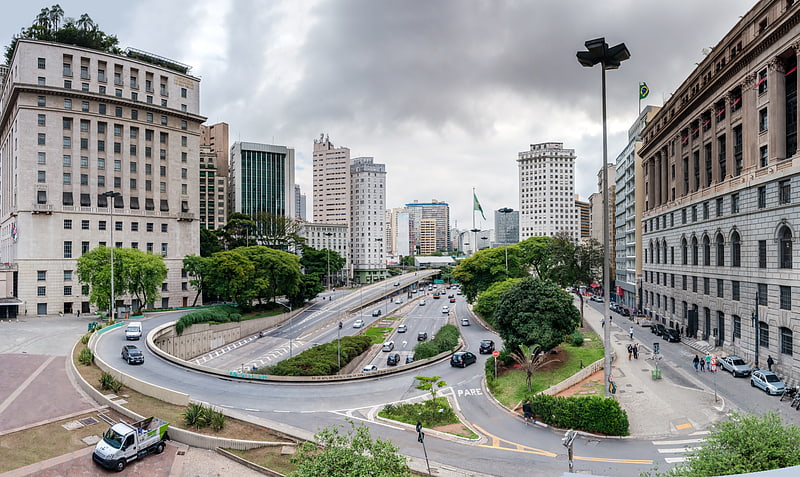
Also known as: Edifício Matarazzo
Building in São Paulo, Brazil. Matarazzo Building, also known as Palácio do Anhangabaú is the city hall of the city of São Paulo, Brazil. It belonged to Banespa until 2004, when it was sold to the city government. It was designed by Italian architect Marcello Piacentini under the will of Ermelino Matarazzo, in order to host the headquarters of his industries. The building's architectural style looks like Art Deco.
According to the deal made with Banespa, the building would be given to the city government as part of the debt of 885 million reais (some 466 million dollars) that the extinct CMTC had with the bank. The city would then owe 156 million reais, to be paid in four years.[35]